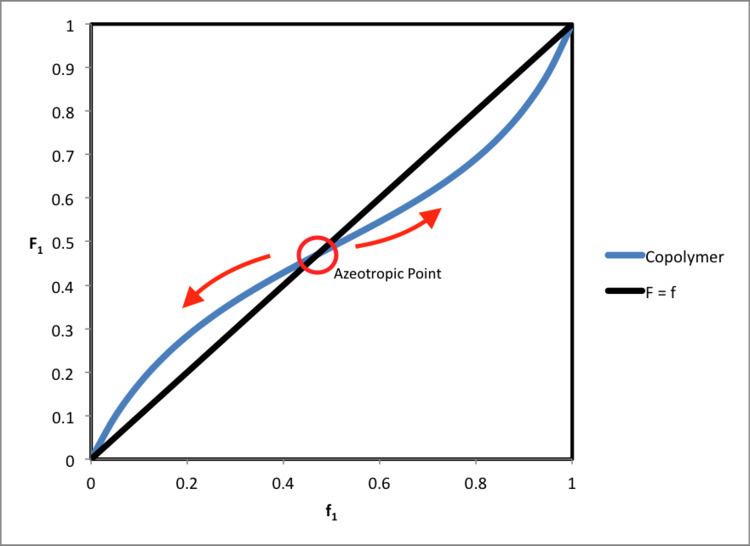 | ||
Composition drift occurs during the process of free radical copolymerization causing variation in the instantaneous mole fraction of a monomer added to copolymer, therefore altering the chemical composition of the copolymer over the period of conversion.
Contents
The degree of composition drift is directly affected by the reactivity ratios of each monomer in the copolymer system. Both the Mayo-Lewis equation and plot of the equation make evident that as monomer conversion increases, the copolymer composition will drift as the preferences for monomers change due to the interaction between reactivity ratios and the instantaneous concentration of each monomer.
Composition drift in some degree will occur unless the reactivity ratios for both monomers are equal to 1. In this case, each monomer prefers reaction with itself and the other monomer equally. This causes equal rates of consumption for copolymer formation and leads to random copolymerization.
Mole fractions
Azeotropic Compositions
Binary copolymerization resembles distillation of a bicomponent liquid mixture with reactivity ratios corresponding to the ratio of vapor pressures of the pure components in the latter case. Distillation terminology is also borrowed for the case of azeotropic compositions in copolymer systems. Azeotropic points occur where
The azeotropic concentrations are unstable operation points, as any small change in temperature will cause a shift in molar concentration through reactivity ratio effects and cause subsequent composition drift. Azeotropic points are most likely to occur in systems where the feed monomers have similar reactivity ratios.
Control or elimination of composition drift
The goal of engineering for free radical copolymerization is to have
- Semibatch reactor or fed-batch reactor: by adding the monomer that is preferentially consumed at the reaction rate,
f 1 - Continuous stirred tank reactor (CSTR): at steady state he reactor composition (
f 1
